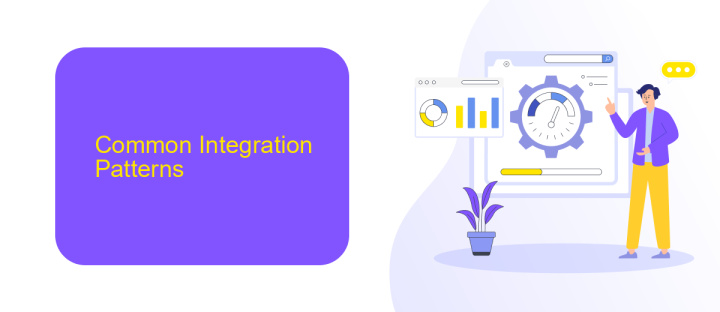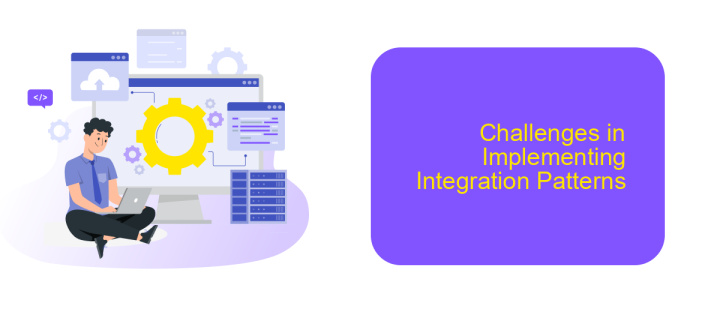iPaaS Integration Patterns
In today's digital landscape, integrating diverse applications and data sources is crucial for seamless business operations. Integration Platform as a Service (iPaaS) offers a comprehensive solution to this challenge, enabling organizations to connect disparate systems efficiently. This article explores common iPaaS integration patterns, providing insights into how they can streamline workflows, enhance data consistency, and drive operational excellence.
Introduction to iPaaS
iPaaS (Integration Platform as a Service) is a cloud-based solution designed to facilitate seamless integration between various applications and data sources. It enables organizations to connect disparate systems, automate workflows, and ensure data consistency across different platforms without the need for complex custom coding.
- Streamlined integration processes
- Real-time data synchronization
- Scalability and flexibility
- Cost-effective solution
- Enhanced collaboration and productivity
By leveraging iPaaS solutions like ApiX-Drive, businesses can effortlessly connect their CRM, ERP, marketing automation, and other systems. ApiX-Drive offers a user-friendly interface and a wide range of pre-built connectors, making it easier for organizations to set up and manage integrations. This not only reduces the time and effort required for integration but also ensures that data flows smoothly and accurately between different applications.
Common Integration Patterns

One of the most common iPaaS integration patterns is the Data Synchronization pattern, which ensures that data is consistently updated and replicated across multiple systems. This pattern is essential for maintaining data integrity and accuracy, especially in environments where data is frequently modified. For example, when a new customer record is created in a CRM system, the Data Synchronization pattern ensures that this information is automatically updated in the ERP system, providing a unified view of the customer across different platforms.
Another widely used pattern is the Event-Driven Integration pattern, which allows systems to react to specific events in real-time. This pattern is particularly useful for scenarios that require immediate responses, such as order processing or inventory management. Services like ApiX-Drive facilitate these integrations by offering pre-built connectors and automation tools that simplify the setup process. By leveraging such services, businesses can streamline their workflows, reduce manual intervention, and improve overall operational efficiency.
Benefits of Using Integration Patterns

Integration patterns offer a structured approach to streamline and simplify the integration process between various systems and applications. These patterns help businesses reduce complexity, improve efficiency, and ensure consistent data flow.
- Standardization: Integration patterns provide standardized solutions, reducing the need for custom coding and making integrations easier to manage and maintain.
- Reusability: Patterns can be reused across different projects, saving time and resources by leveraging proven solutions.
- Scalability: Integration patterns support scalable architectures, allowing businesses to grow without reworking their integration strategies.
- Reliability: Using tested patterns ensures more reliable and stable integrations, minimizing errors and downtime.
- Cost Efficiency: By reducing development time and maintenance efforts, integration patterns can lead to significant cost savings.
Services like ApiX-Drive make it easier to implement these integration patterns by providing a user-friendly platform for connecting various applications and automating workflows. This allows businesses to focus on their core activities while ensuring seamless data integration and management.
Challenges in Implementing Integration Patterns

Implementing integration patterns in an iPaaS environment presents several challenges that organizations must navigate. One of the primary issues is the complexity of integrating diverse systems and applications, which often have varying protocols, data formats, and security requirements. This complexity can lead to increased development time and higher costs.
Another significant challenge is maintaining data consistency and integrity across integrated systems. Data synchronization errors can result in inaccurate or incomplete information, which can negatively impact business operations and decision-making processes. Ensuring real-time data updates and error handling mechanisms is crucial for seamless integration.
- Compatibility issues between legacy systems and modern applications
- Scalability concerns as the number of integrated systems grows
- Security vulnerabilities during data transmission and storage
- Lack of skilled personnel to manage and maintain integrations
Utilizing services like ApiX-Drive can help mitigate some of these challenges by providing a user-friendly platform for setting up and managing integrations. ApiX-Drive offers pre-built connectors and automated workflows, reducing the need for extensive coding and allowing for quicker deployment. However, careful planning and continuous monitoring are essential to ensure the long-term success of integration projects.
Best Practices for Implementing Integration Patterns
When implementing iPaaS integration patterns, it is crucial to start with a clear understanding of your business requirements and objectives. Define the data flows, transformation needs, and integration points between various systems. This initial planning phase helps in selecting the right integration pattern and tools, ensuring that the solution aligns with your business goals. Utilizing services like ApiX-Drive can simplify the process by providing a user-friendly platform for setting up and managing integrations without the need for extensive coding knowledge.
Another best practice is to prioritize security and compliance throughout the integration process. Ensure that data is encrypted during transmission and storage, and implement robust authentication and authorization mechanisms. Regularly monitor and audit integration workflows to identify and address any potential vulnerabilities. Additionally, leverage the scalability and flexibility of iPaaS solutions to adapt to changing business needs and technological advancements. Tools like ApiX-Drive offer the advantage of easy scalability, enabling businesses to expand their integration capabilities as they grow.
FAQ
What is iPaaS?
How does iPaaS differ from traditional integration methods?
What are common integration patterns used in iPaaS?
What are the benefits of using iPaaS for integration?
How can I get started with iPaaS integration?
Apix-Drive will help optimize business processes, save you from a lot of routine tasks and unnecessary costs for automation, attracting additional specialists. Try setting up a free test connection with ApiX-Drive and see for yourself. Now you have to think about where to invest the freed time and money!

